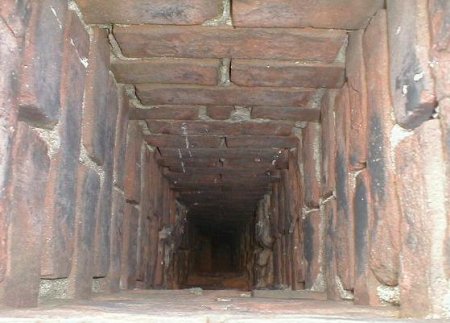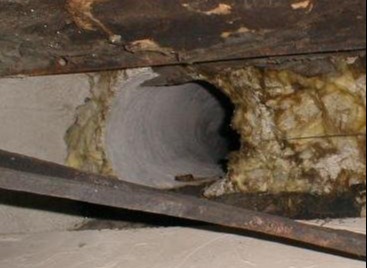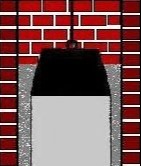

Most of the older homes have chimneys that are made of brick or stone for venting fireplaces. The early wood chimneys turned out to be a problem. The area inside of the chimney is called the flue. It wasn't until well into the 20th century that flue liners were common.
It may have worked just fine for over a century without a liner, but that's over a hundred years of use and wear. Most unlined chimneys are very likely overdue to be lined. No doubt it will be safer.

The least expensive and easiest liner to install is a metal tube. It's usually stainless steel and can be rigid pipe or corrugated and flexible. One of the difficulties with this type liner is getting one to fit that doesn't considerably reduce the inside dimension of the flue. Too small of a diameter and it won't draft properly, resulting in smoke spilling out into the building. The other issue is the transition from the round, smaller flue to the large throat above the fireplace. Oftentimes this involves some significant dismantling above the fireplace that will then need repair. These metal liners are better suited for connecting to a gas appliance, wood or coal stove.
Another method is a cast-in-place concrete flue lining system. Most of these are installed by first cleaning, then temporarily placing a long inflatable rubber tube down the flue a then centered inside the chimney. A lightweight, heat resistant concrete mix is then poured to fill the entire area between the tube and the walls of the chimney. This creates a seamless, smooth interior that's easy to clean. It also adds thermal insulation. This method can also be used to create multiple flues inside a large chimney.

Note that the resulting small, round flue dimension can make certain types of older fireplaces unusable. This installation is not reversible.
I've seen many large open fireplaces and shallow fireplaces rendered inoperable with this lining method. The cross sectional area of a round flue should be no less than 1/12 the area of the opening at the front of a fireplace.

There is another method of casting a liner that creates a much larger cavity. A large steel box with beveled sides, or a large oval bell, is lowered by a winch down the chimney.
The box or bell is slowly raised while the concrete is poured from the top. This forces the concrete against the interior walls, filling any gaps and reinforcing the chimney. The result is a flue with a large interior dimension.
These cast in place concrete lining systems also reinforce worn, weakened chimney structures, unless it is seriously structurally deficient. I have seen this process collapse the walls of the chimney structure.


Bill Kibbel is a consultant and an inspector of historic homes
& commercial buildings at Heritage Building Inspections.
Start your own site - Learn more